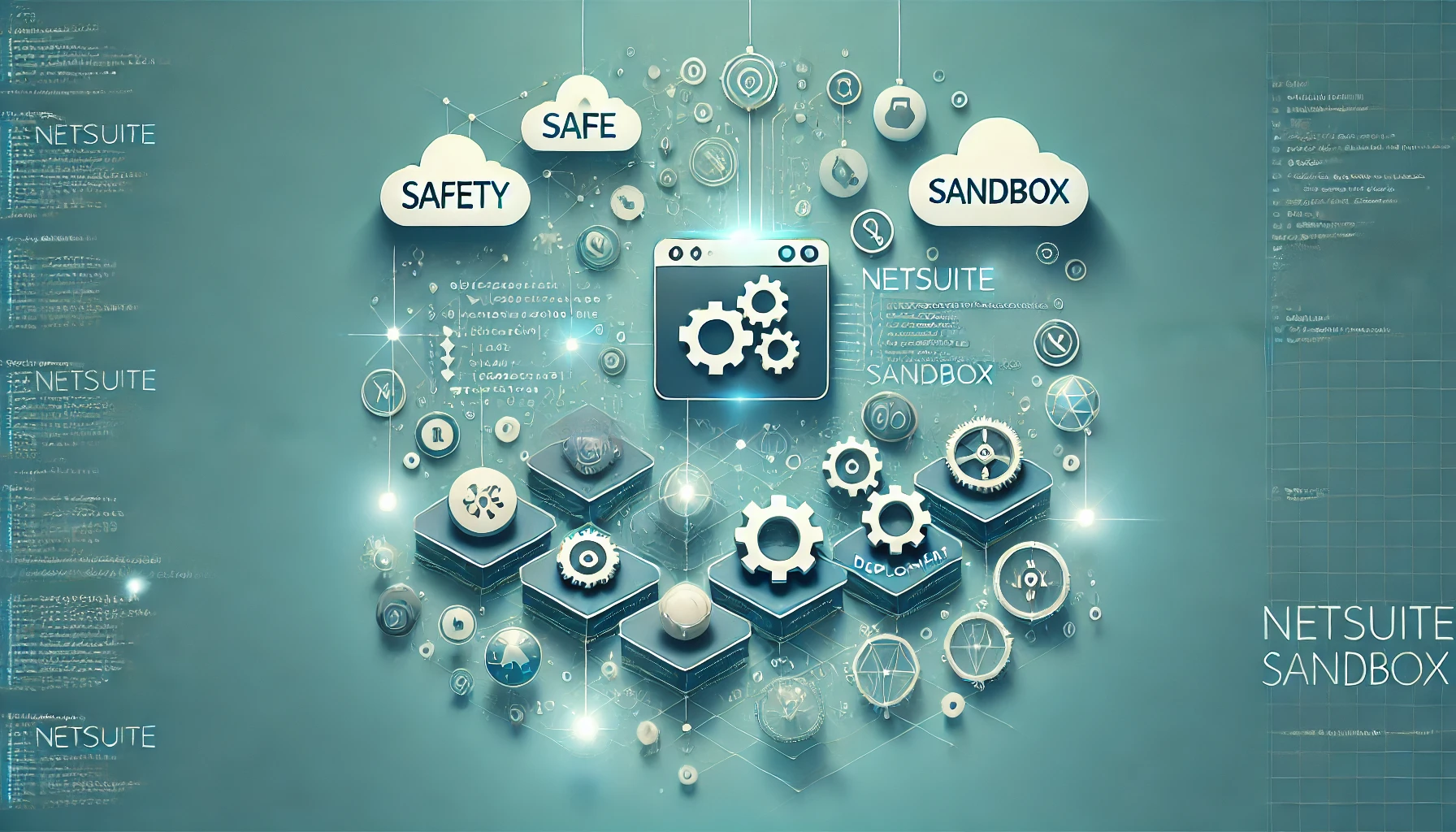Navigating NetSuite Environments: What You Need to Know About Sandbox and Production
When implementing or customizing any enterprise resource planning (ERP) software, minimizing risk is crucial, especially when it comes to your core business data and workflows. In NetSuite, understanding the difference between Sandbox and Production environments is vital to ensuring smooth operations and successful deployments.
This blog dives into the comparison between NetSuite Sandbox vs Production, explains when to use each, outlines their key benefits, and offers best practices for maximizing their utility.
Before jumping into Sandbox and Production, it’s important to understand what NetSuite environments are.
In NetSuite, an environment is a separate instance of your account that hosts your organization’s data, customizations, configurations, and users. The primary purpose of multiple environments is to enable safe development and testing without impacting day-to-day business operations.
There are three main NetSuite environments:
- Production – Your live, real-time environment where all transactions and business processes occur.
- Sandbox – A replica of the production environment for testing and development.
- Release Preview – A temporary account used to test the next NetSuite version before the update goes live.
What Is the NetSuite Production Environment?
The Production environment is your company’s live NetSuite account. It’s where all real-time business operations occur financial transactions, inventory management, CRM activities, and more. This is the version of NetSuite that your employees use daily.
Key Features of Production:
- Live data: All customer, inventory, financial, and transactional data is real and actively used.
- No room for error: Mistakes can disrupt business operations or cause compliance issues.
- Limited customization: While some changes can be made directly, it’s best practice to first test in Sandbox.
When to Use It:
- To execute real business operations.
- To monitor real-time performance metrics.
- For final deployment of well-tested customizations.

What Is the NetSuite Sandbox Environment?
The NetSuite Sandbox is a testing environment that mirrors your production account. It’s primarily used for development, experimentation, testing, and training. This environment ensures that you can test thoroughly before making changes live.
Key Features of Sandbox:
- Copy of production: Replicates your account structure, workflows, and customizations.
- Safe for testing: No risk of corrupting live data or disrupting business.
- Customization and development: Build scripts, Suitelets, workflows, and SuiteScripts without impacting real users.
Types of Sandbox Accounts:
- Standard Sandbox – Used for routine testing and development.
- Development Sandbox – Isolated from production and used for coding and app development.
- Premium Sandbox – Allows multiple sandbox accounts for large organizations.
When to Use It:
- To test new features, scripts, and workflows.
- To train new employees without risk.
- To validate integrations with third-party systems.
NetSuite Sandbox vs Production: Head-to-Head Comparison
| Feature | Sandbox Environment | Production Environment |
|---|---|---|
| Data | Copy of production (non-live) | Live, real-time data |
| Usage | Development, testing, training | Daily business operations |
| Risk | Zero impact on real data | High impact if errors occur |
| Accessibility | Requires subscription | Included with NetSuite license |
| Customization Deployment | Test before deployment | Only deploy tested and approved features |
| Refresh Capability | Can be refreshed with current production | Not applicable |
| Integration Testing | Safe for testing APIs and connectors | Final integration validation |
Why Sandbox Is Essential in NetSuite Development
Customizing NetSuite can involve complex processes; SuiteScripts, workflows, third-party integrations, and more. A small error in a script can create massive issues in a live system.
Here’s why Sandbox is a non-negotiable:
1. Safe Testing Environment
Developing SuiteScripts or deploying SuiteFlows without breaking business logic is only possible in Sandbox. It’s the place to fail safely and fix bugs before real users ever see them.
2. System Integration Validation
Before integrating tools like Shopify, Salesforce, or third-party logistics platforms, test every webhook and data sync logic in Sandbox.
3. Training Without Pressure
New users can learn NetSuite in a risk-free setting. Errors made in Sandbox don’t affect actual customer records, sales, or inventory.
4. Change Management
Whether you’re rolling out a new process or modifying roles and permissions, Sandbox lets you test how those changes will affect users.
Best Practices for Using NetSuite Sandbox and Production
To get the most out of your NetSuite environments:
Always Develop and Test in Sandbox First
Never code or create workflows directly in production. Start in Sandbox, test thoroughly, and migrate using SuiteBundler or manually.
Schedule Regular Sandbox Refreshes
Refreshing your Sandbox ensures it mirrors the latest production data. But remember—it will overwrite all existing Sandbox data.
Use Role-Based Access
Limit Sandbox and Production access appropriately. Developers and QA teams should primarily work in Sandbox, while business users stick to Production.
Maintain a Deployment Log
Track what features, scripts, or bundles have been tested and moved from Sandbox to Production to prevent redundancy and maintain visibility.
Common Mistakes to Avoid
- Skipping Sandbox altogether to “save time” (this often leads to bigger problems).
- Not refreshing Sandbox before a major deployment, resulting in inconsistencies.
- Testing with incomplete data, which gives false results during production deployment.

Cost Considerations
The NetSuite Sandbox is not included in the standard license and comes at an additional cost. However, the ROI from reduced errors, faster go-lives, and stable deployment outweighs the investment.
Larger organizations often opt for multiple Sandboxes especially when managing different departments or regions with custom needs.
Conclusion
Understanding the difference between NetSuite Sandbox vs Production is key to successful implementation, customization, and day-to-day stability. Sandbox empowers you to innovate, test, and train without fear. Production, on the other hand, is your business heartbeat, and must be safeguarded through thorough testing and strategic planning.
If you’re serious about scaling your NetSuite setup, investing in Sandbox is not just advisable, it’s essential.



